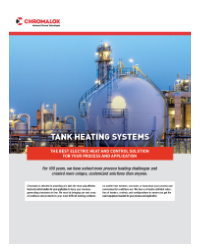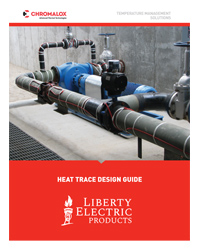Supporting Upstate New York, NY Metro, Long Island, New Jersey, and New England
Tank Heating
Heating a tank using electric resistance heaters may be required to maintain pumping viscosity of heavy oil or resins, to prevent crystalline precipitation (sodium hydroxide), to facilitate production processes, for freeze protection, and hundreds of other applications. LEP & NEES can design and provide products for heating tanks of all sizes using various heating approaches.
Tank heaters can be used to maintain temperatures of gases and fluids in tanks from -300°F to 1000°F as they are designed with low watt density, open coil heating elements for uniform heating of the materials inside of a tank.
Types of Electric Tank Heating
There are two main methods to tank heating; direct and indirect tank heating.
Direct Tank Heating
Direct tank heating consists of placing the heater in direct contact with the heated medium by placing the heater directly in the tank or circulating the fluid directly through the heater. The advantage of heating directly is that the heaters are nearly 100% efficient with this method. This is because all heat that is generated is absorbed directly by the process. This helps to speed heat-up and eliminate thermal lag. There is no intermediate heat transfer medium that could result in heat losses.
Indirect Tank Heating
Indirect tank heating uses a heat transfer medium to apply the heat to the tank. Indirect methods can vary from external heating of the tank using the tank wall as the heating medium to utilizing a heat transfer medium to carry the heat to the tank. The biggest advantage to indirect heating is that the heater can typically be serviced without draining the tank. Second, indirect heating often allows watt density exposed to the process fluid to be lowered by spreading the heat over a larger surface.
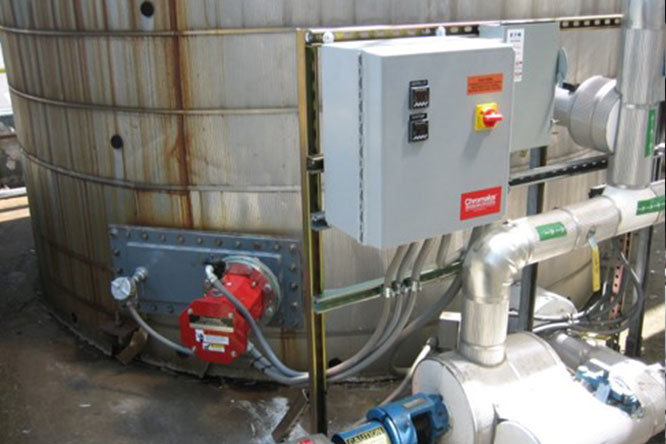
Electric Tank Heater installed with controls
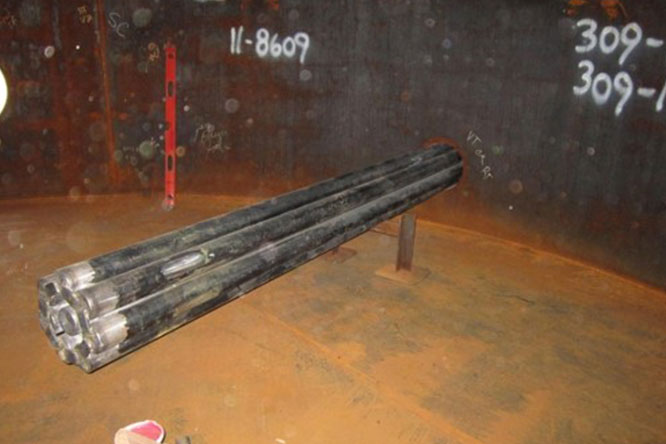
Immersion Heater from the inside
Products Used for Electric Tank Heating
Immersion Heaters
Immersion heaters are designed for direct contact (this is a must) heating of water, oils, viscous materials, solvents, process solutions and gases for many industrial heat applications. Various temperature control options permit very tight process temperature control. Basic mounting options of threaded screw plug connections, flanges, or simple over-the-side designs are available from stock for immediate delivery.
- Length: Up to 240”
- Power ratings: Up to 2500 kW+
- Voltage: 120V - 7200V
- Flange & sheath material chosen per application: brass, steel, stainless steel, incoloy, monel, and various other materials of construction available
- Customized watt densities available
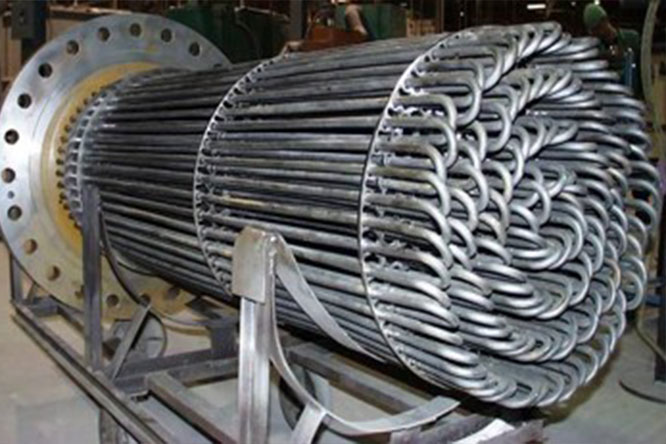
Flange Immersion Heater
Immersion Heaters with Removable Elements
The Chromalox Electric Tank Immersion Heater, Model LTFX, is designed to give years of virtually maintenance-free service and it is shipped ready for installation into a storage tank. LTFX provides low watt-density heating over a large heating surface with precise temperature control for such materials as asphalt, fuel oil, pitch and tar, liquid sugar, lube oils, linseed oil, biodiesel, glycerin, ethanol and many other heat sensitive compounds. The open coil heating elements (OCE) are housed in either 2” or 3” Schedule 40 carbon or stainless-steel pipes, which are welded into the 150# ANSI flange. Once the unitary immersion heater is mated to your tank, the heating elements may be removed and replaced without draining the tank.
- Carbon or stainless-steel construction
- 4" to 14" 150# flange sizes
- 4 - 240 kW unit ratings
- 5' - 25' immersion lengths
- 9 - 12 W/in2 (pipe surface)
- 480V three phase (600V Available)
- Custom flange sizes, kW rating, or voltages available
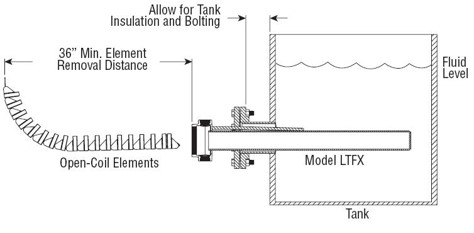
Immersion Heater Diagram
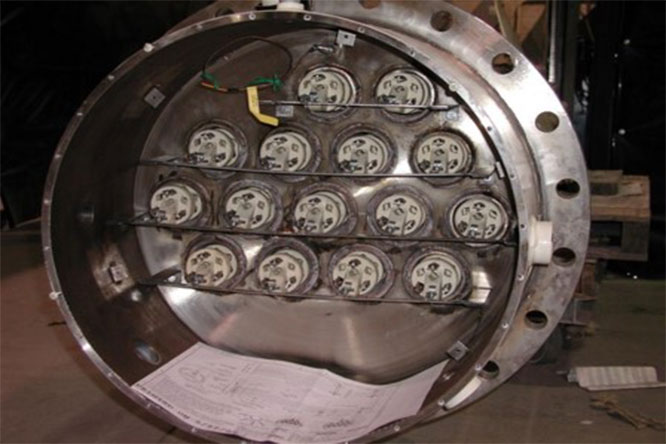
Tank Heater with Removable Element
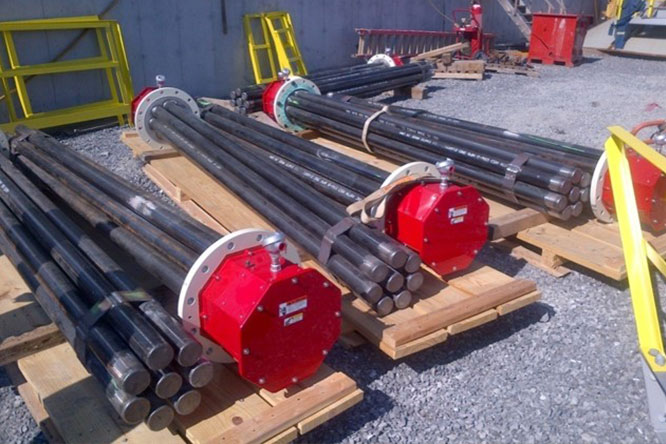
Storage Tank Heaters
Circulation Heaters
Circulation heaters are utilized in direct heating applications. The process fluid is circulated directly through the heater. The reason you would choose a circulation heater over an immersion heater directly installed in the tank is either due to space limitations or watt density limitations requiring high fluid velocity over the elements to increase heat transfer. Furthermore, if the circulation heater is piped and valved properly, the heater may be serviced without draining the tank. The circulation of the process fluid is provided by a pump or natural convection.
- 2 - 14” galvanized carbon steel pipe body, 150 lb construction
- 3 - 500 kW
- 120, 240 and 480V, 1 & 3 phase
- General purpose, moisture resistant/explosion resistant, explosion resistant or moisture resistant terminal enclosure
- 0.475” diameter copper sheath elements (45 - 50 W/In2)
- With & without thermostat
- UL, CSA and other third-party approval, listing or certification available on many models
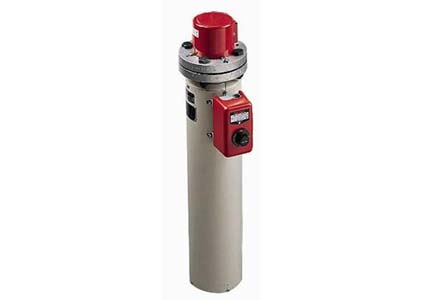
Direct Contact Circulation Heater
Low Cost Tank Heating
The Epoxy Laminated Panel (ELP) are patented flat foil resistive elements that are laminated by heat and pressure in a multi-layer fiberglass construction with epoxy resin. The resulting electric heater design is a semi-flexible panel that is waterproof and durable that can be used in dry, wet, or corrosive environments.
ELP heating panels can be used in a variety of heating applications spanning from freeze protection to process heating with exposure temperatures ranging from -40°F to +212°F as with the low watt density of this heating panel, together with its low mass, it will provide unequaled thermodynamic performance.
ELP heating panels are available in both 120V/240V and can be used on either vertical or horizontal tanks with diameters of 48" and above, with either metallic or non-metallic construction. The heaters are usually installed by banding them to the tank with metal bands or polyester straps and then applying adhesive aluminum tape to the edges of the heaters which act.
Not only is the cost of these panels substantially less than other options, the installation cost is very minimal. To comply with the NEC 427.23 all heaters are supplied with an overall ground and ELP heating panel is approved for hazardous and non-hazardous areas.
Download the ELP Tank Heating Panel for all the technical specifications of this product.
Required Sizing Information - Electric Tank Heating
For any application, it is essential that complete data be obtained and understood before an evaluation and selection of a suitable heating system can be made. Specifically, you will need:
- Tank size, configuration, material of construction, and detail of nozzles and legs
- Insulation - Thickness & k-factor
- Heated material specific gravity and/or density
- Temperature rise or temperature to be maintained
- Heat up or temperature recovery times
- Process additions to tank - Volume & incoming temperature
- Minimum low ambient temperature exposure
- Hazardous/non-hazardous service area
- Environmental considerations
- Code requirements


